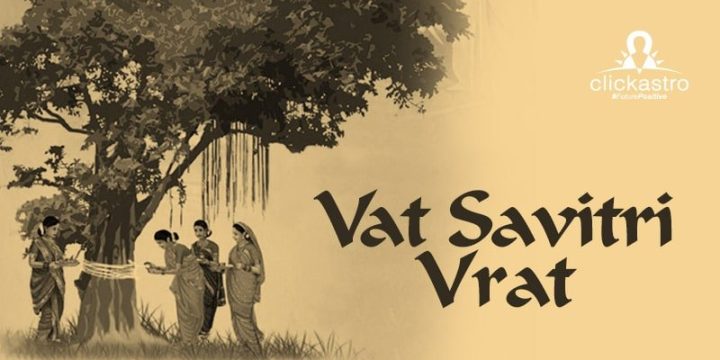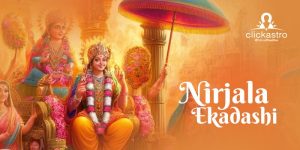Vat Purnima, also known as
Vat Savitri Vrat, is a revered
Hindu festival cherished by married women across North India, Maharashtra, Goa, and Gujarat. It is a beautiful expression of love and devotion towards their spouses, symbolized by tying a ceremonial thread around a sacred banyan tree on the auspicious day of ‘
Purnima‘ (full moon) or ‘
Amavasya‘ (new moon) in the month of ‘Jyeshtha’ as per the ancient
Hindu calendar, which usually falls in May-June according to the Gregorian calendar. The fasting rituals commence on the 13th day (‘trayodashi’) and culminate on Purnima or Amavasya. The festival revolves around the legendary tale of Savitri and Satyavan from the epic
Mahabharata.
While most Hindu festivals are celebrated on the same day in the Purnimanta and Amanta lunar calendars,
Vat Savitri Vrat stands apart. It is observed on ‘Jyeshtha Amavasya’ and is also known as ‘Shani Jayanti’ in the Purnimanta calendar. Conversely, in the Amanta calendar, Vat Savitri Vrat falls on ‘Jyeshtha Purnima’ and is referred to as ‘
Vat Purnima Vrat.’ As a result, married women in southern Indian states, and Gujarat and Maharashtra, observe this sacred vrat 15 days after their counterparts in northern India.
Get Your
Couple’s Horoscope
During
Vat Savitri Vrat, married Indian women fast and offer prayers for the well-being and longevity of their husbands and children. According to Hindu mythology, Savitri, on this day, convinced Lord Yamaraja, the God of Death, to revive her beloved husband, Satyavan. Her unwavering faith and devotion touched Lord Yamaraja’s heart, prompting him to grant her wish and reunite her with her spouse. Since then, married women have been observing this vrat and offering prayers to the revered ‘Vat’ (bargad or banyan) tree, seeking protection for their husbands’ prosperity and the prosperity of their families.

In India,
Vat Savitri Vrat is observed with immense enthusiasm and devotion. It is a celebration that reaffirms the sacred bond of marriage and highlights the power of love, faith, and dedication. As married women come together to perform rituals, offer prayers, and express their deep affection for their spouses, the festival becomes a vibrant testimony to the eternal nature of marital bliss. Vat Savitri Vrat stands as a reminder of the enduring commitment and the profound connection shared between husband and wife, transcending not only this lifetime but seven successive births as well.
Check Your
Marriage Compatibility
When is Vat Savitri Vrat in 2025?
The occasion of Vat Savitri Purnima will be observed on May 26, Monday in the northern parts of the country.
The Muhurat timings are as follows:
- Sunrise: May 26, 5:45 AM
- Sunset: May 26, 7:01 PM
- Amavasya Tithi Commences: May 26, 12:12 PM
- Amavasya Tithi Concludes: May 27, 08:32 AM
In the southern parts of the country Vat Savitri will be observed on June 10, Tuesday.
Rituals to Follow
The rituals associated with
Vat Savitri Vrat hold great significance, ensuring the sanctity and auspiciousness of this revered celebration. Let’s delve into the detailed rituals that are performed during this sacred observance.
During Vat Purnima, women observe a three-day fast as a tribute to their husbands, emulating the devotion of Savitri. Throughout these three days, intricate depictions of a banyan tree (Vat), Savitri, Satyavan, and Yama are meticulously drawn on the floor or a wall using a paste made from sandalwood and rice. Golden figurines representing the divine couple are placed in a tray filled with sand and worshipped with mantras and Vat leaves.
On the day of
Vat Savitri Vrat, women rise before sunrise and partake in a purifying bath infused with sesame seeds and Indian gooseberry (amla). Adorned in fresh and vibrant attire, they embellish their wrists with bangles and apply vermilion to their foreheads after bathing. The day commences with the offering of five different fruits and a coconut. Women who observe the three-day fast consume only roots during this period, particularly the root of the banyan tree (Vat), accompanied by water.
Following this, the women proceed to worship the sacred Vat tree by encircling it seven times with a thread of white, yellow, or red color. This act symbolizes their eternal bond with their husbands. The worship includes the offering of copper coins, water, flowers, and rice. The ladies perform a circumambulation around the tree, known as ‘parikrama,’ chanting prayers as they make their way around. This strict adherence to the fast and the traditional rituals is believed to ensure their husbands’ long and prosperous lives, extending across the next seven births. Throughout the fast, women greet one another with the phrase “Janm Savitri Ho,” signifying their wish for each other to embody the qualities of Savitri.
If a banyan tree is not readily available, women may create a representation of the tree using turmeric or sandalwood paste on a wooden plate. On the day of
Vat Savitri Vrat, special puja ceremonies are conducted, and delectable delicacies are prepared as Naivedhya, an offering to the deities. These offerings are then shared among friends and family following the puja. Additionally, devotees engage in the recitation and listening of the Vat Savitri Vrat Katha, a narrative that captures the essence and significance of this observance. Seeking blessings from elders and married women in the household is also customary on this occasion.
Furthermore, offering acts of charity holds immense value during
Vat Savitri Vrat. Devotees generously donate money, food, and clothing to the underprivileged and destitute, thereby earning divine blessings and spreading joy and abundance to those in need.
These cherished rituals of
Vat Savitri Vrat embody the devotion, love, and commitment shared between married couples. By faithfully following these customs, women seek the eternal well-being and prosperity of their husbands while upholding the sanctity of this revered festival.
Exploring the rich mythology behind festivals and fasts adds a captivating layer of intrigue. The story of Vat Savitri Vrat is no exception, as it weaves a tale of love and devotion. Let’s dive into the captivating legend behind this auspicious observance.
Get Your
Free Marriage Predictions
Know the Legend
According to ancient legends from the Mahabharata period, the king Asvapati and his queen Malavi longed for a child. In response to their fervent prayers, the god Savitr appeared and announced that they would soon have a daughter. The couple named her Savitri in honor of the divine blessing bestowed upon them.
Savitri grew up to be a paragon of beauty and purity, captivating the hearts of all in her kingdom. However, no man dared to ask for her hand in marriage, fearing her ethereal presence. In light of this, Asvapati advised Savitri to choose a suitable husband for herself. Thus, she embarked on a journey and encountered Satyavan, the son of a blind king named Dyumatsena, who had been exiled to the forest. Savitri returned home and informed her father of her decision to marry Satyavan. Sage Narada intervened, revealing that Satyavan, though perfect in every way, had only one year to live. Despite this grim prophecy, Savitri remained resolute in her choice and married Satyavan.
Click to Check Free Love Matching
Three days before Satyavan’s predicted death, Savitri began a rigorous fast and vigil. While her father-in-law urged her to reconsider such a challenging ordeal, Savitri affirmed her oath and received his support. On the fateful morning, as Satyavan was splitting wood, he suddenly grew weak and fell into Savitri’s lap, breathing his last breath. Savitri placed his lifeless body beneath a mighty banyan tree, known as the Vat tree. When Yama, the lord of death, arrived to claim Satyavan’s soul, Savitri followed him, pleading for her husband’s return. Impressed by her unwavering devotion, Yama granted her three boons, except for the restoration of Satyavan’s life.
Seizing this opportunity, Savitri first requested the restoration of her father-in-law’s sight and kingdom. She then asked for a hundred children for her own father. Finally, she asked for a hundred children for herself and Satyavan. This last wish presented a dilemma to Yama, as granting it indirectly meant giving Satyavan his life back. Moved by Savitri’s purity and dedication, Yama offered her the chance to ask for any other boon instead.
Without hesitation, Savitri requested the resurrection of Satyavan. Yama granted her wish, and Satyavan awakened from his slumber. Together, they returned to Satyavan’s parents, where Dyumatsena’s sight was miraculously restored. Astonished by this turn of events, everyone gathered around, and Savitri recounted the entire story to her in-laws, husband, and the assembled ascetics. The news of the tyrant’s demise reached them, and with joy and relief, the king and his entourage returned to their kingdom. While the banyan tree played a minor role in the narrative, it is revered as a symbol of the everlasting love depicted in this legendary tale.
The Importance of Vat Savitri Vrat
The Vat Savitri Vrat holds immense significance as described in various Hindu Puranas such as the Bhavishyottar Purana and the Skanda Purana. These ancient texts shed light on the worship of the banyan tree (Vat) during Vat Savitri Vrat. In Hindu mythology, the banyan tree symbolizes the Trimurtis—Lord Brahma, Lord Vishnu, and Lord Maheshwara. Its roots represent Lord Brahma, the stem represents Lord Vishnu, and the top of the tree represents Lord Shiva. The entire Vat tree symbolizes Savitri, embodying her devotion and strength.
On this auspicious day, women observe a sacred fast to ensure the well-being and safety of their husbands, praying for their prosperity and success. The rituals associated with Vat Savitri Vrat serve as a reminder of the eternal bond between married couples and the power of unwavering love and dedication.
Author B. A. Gupte, in his book, refers to a Pauranic extract that suggests the festival’s mythology is symbolic of natural phenomena. He suggests that Satyavan and Savitri represent the annual union of the Earth and nature. Similar to how the Earth undergoes a cycle of death and rebirth each year through natural forces, their story reflects this eternal rhythm. The choice of the banyan tree in the legend is likely influenced by the tree’s legendary status within Indian culture. Thus, the Vat Savitri Vrat encompasses profound symbolism and embodies the timeless values of devotion, faith, and the indomitable power of love.

 In India, Vat Savitri Vrat is observed with immense enthusiasm and devotion. It is a celebration that reaffirms the sacred bond of marriage and highlights the power of love, faith, and dedication. As married women come together to perform rituals, offer prayers, and express their deep affection for their spouses, the festival becomes a vibrant testimony to the eternal nature of marital bliss. Vat Savitri Vrat stands as a reminder of the enduring commitment and the profound connection shared between husband and wife, transcending not only this lifetime but seven successive births as well.
Check Your Marriage Compatibility
In India, Vat Savitri Vrat is observed with immense enthusiasm and devotion. It is a celebration that reaffirms the sacred bond of marriage and highlights the power of love, faith, and dedication. As married women come together to perform rituals, offer prayers, and express their deep affection for their spouses, the festival becomes a vibrant testimony to the eternal nature of marital bliss. Vat Savitri Vrat stands as a reminder of the enduring commitment and the profound connection shared between husband and wife, transcending not only this lifetime but seven successive births as well.
Check Your Marriage Compatibility







